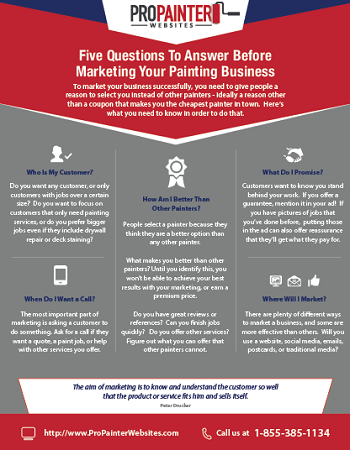Seasonal Factors In Industrial Exterior Painting: Key Insights You Should Be Aware Of
Seasonal Factors In Industrial Exterior Painting: Key Insights You Should Be Aware Of
Blog Article
Material By-Doherty Bagger
When you're intending a commercial outside painting project, seasonal factors can make or break your results. You'll wish to take into consideration exactly how temperature and humidity effect paint application and drying out times. Choosing the ideal period can ensure your paint sticks effectively and lasts longer. Yet which periods are truly the most effective for this kind of work? Let's explore the key elements that can affect your job's success.
The Effect of Temperature Level on Paint Application
When you're preparing a business exterior paint project, the temperature level can dramatically impact exactly how well the paint adheres and dries.
Preferably, you want to repaint when temperature levels vary in between 50 ° F and 85 ° F. If it's too chilly, the paint might not cure effectively, causing problems like peeling off or cracking.
On the other side, if it's also hot, the paint can dry also promptly, stopping proper bond and leading to an unequal coating.
You ought to also take into consideration the moment of day; morning or late afternoon uses cooler temperatures, which can be a lot more desirable.
Constantly check the manufacturer's recommendations for the specific paint you're utilizing, as they frequently give guidance on the excellent temperature level array for optimal results.
Humidity and Its Impact on Drying Times
Temperature isn't the only ecological element that influences your industrial external paint job; humidity plays a significant duty also. High humidity levels can slow down drying out times significantly, impacting the overall high quality of your paint job.
When the air is filled with dampness, the paint takes longer to heal, which can cause issues like inadequate bond and a higher threat of mildew growth. If you're painting on an especially humid day, be gotten ready for extensive delay times in between layers.
It's vital to monitor neighborhood climate condition and plan as necessary. Preferably, go for humidity levels between 40% and 70% for optimal drying out.
Keeping these factors in mind guarantees your job remains on track and delivers a long lasting finish.
Best Seasons for Commercial Exterior Paint Projects
What's the best season for your industrial external painting projects?
Springtime and very early loss are typically your best options. Throughout these seasons, temperatures are moderate, and moisture degrees are often reduced, producing suitable problems for paint application and drying out.
Stay minneapolis house painting of summer season's intense heat, which can trigger paint to completely dry as well quickly, leading to bad bond and surface. Likewise, just click the up coming site can impede proper drying out and treating, taking the chance of the longevity of your paint work.
Go for days with temperature levels in between 50 ° F and 85 ° F for optimal results. Keep in mind to inspect the regional weather prediction for rainfall, as wet problems can ruin your job.
Preparation around these aspects guarantees your paint job runs efficiently and lasts much longer.
Verdict
Finally, preparing your business external paint jobs around seasonal factors to consider can make a considerable distinction in the result. By organizing work during the perfect temperature levels and humidity levels, you'll ensure far better adhesion and drying times. Bear in mind to watch on local weather report and pick the correct time of year-- spring and very early loss are your best bets. Taking these steps will certainly aid you achieve a resilient and professional finish that lasts.
